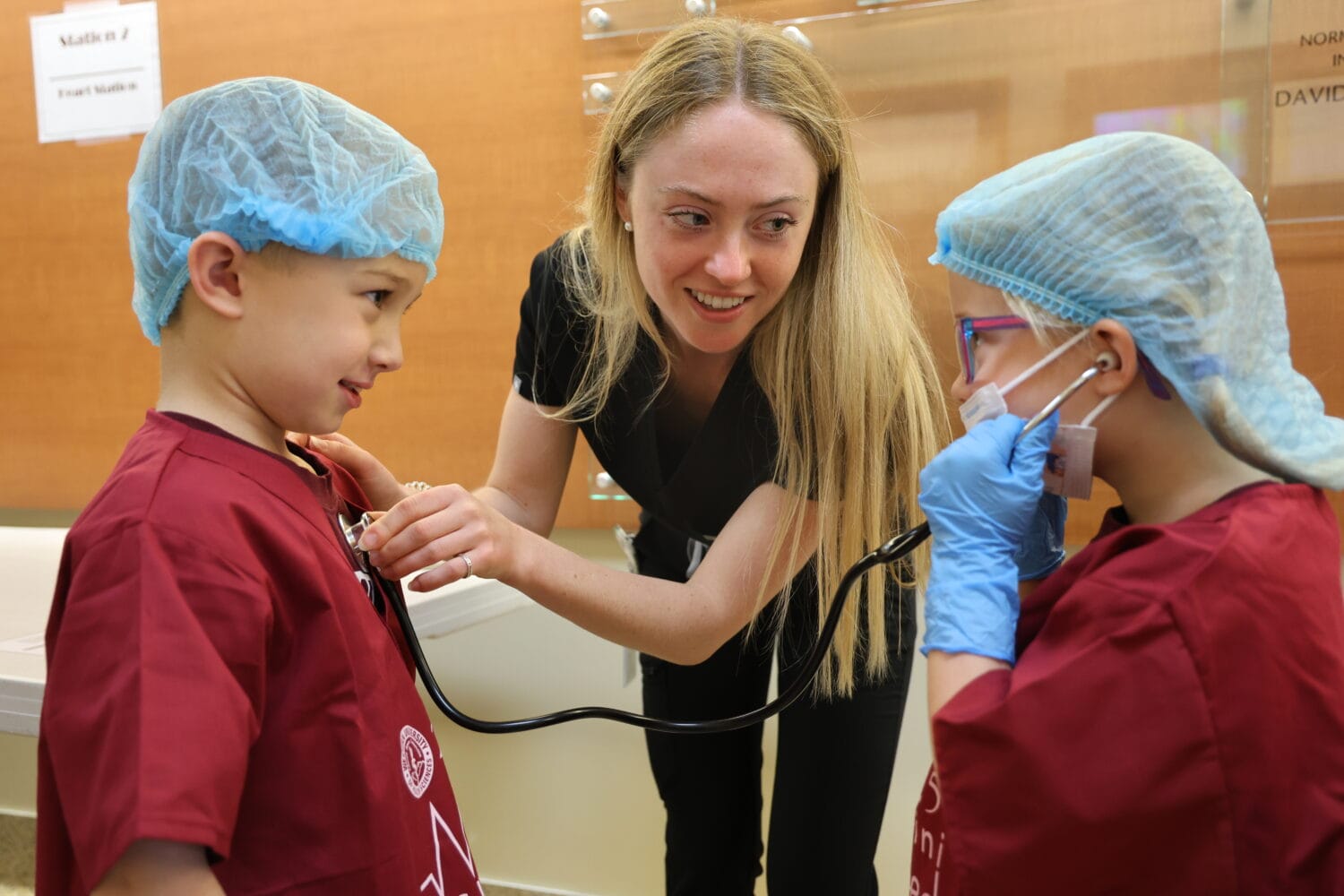WesternU Leads State in Increase of Minority Students to Medical School
Western University of Health Sciences (WesternU) increased the percentage
of underrepresented minority students enrolling in its medical school by
8.2 percent between the 1993-94 and 1998-99 academic years-the largest
increase of any medical school in California, according to The New
Physician Magazine.
As reported in the April 1999 issue, WesternU’s College of Osteopathic
Medicine of the Pacific (COMP) increased the percentage of
underrepresented minorities from 11.7 percent in 1993-94 to 19.9 percent
in the academic year just ended, 1998-99.
Underrepresented minority students, as defined by The New Physician
Magazine, are those students who are of Hispanic, African American or
American Indian heritage. The magazine surveyed the enrollment of
underrepresented minority students who were beginning their first year of
medical studies.
Of the 10 medical schools in California, only three increased their
percentage of underrepresented minority students in the five years between
surveys; all others decreased their percentages. Stanford University’s
College of Medicine was second after COMP in increasing its
underrepresented minority enrollment, going from 14 percent
in 1993-94 to 20.9 percent in 1998-99, a 6.9 percent increase. The
University of California, Los Angeles/Charles R. Drew University of
Medicine and Science increased its percentage from 23.4 percent to 23.7
percent, an increase of three-tenths of a percent.
In addition, The New Physician Magazine reported that COMP’s percentage of
underrepresented minority first-year students was greater than 90 percent
of medical schools throughout the country and Puerto Rico. COMP and the
University of Illinois’ medical school tied for 14th place out of 144
medical schools in the percentage of underrepresented minority enrollment.
Of the 173 students who began their medical studies at COMP in fall 1998,
15 were African American, 17 were Hispanic and 2 were American Indian.
The high percentage of underrepresented minority students comes as little
surprise to WesternU’s Director of Admissions, Susan Hanson.
“”We look at every applicant who meets our minimum requirements for
admission,”” Hanson said. “”Every applicant. Then we take a ‘deeper look.’
In addition to looking at grade point average and MCAT scores, we look
into an applicant’s commitment to medicine, community work, outside
interests and other factors we feel indicate an applicant will succeed
here.””
Unlike some state-supported schools, which may have a “”separate track”” for
minority applicants, COMP always has viewed every candidate equally,
Hanson said.
“”We don’t process a minority student any differently than any other,”” she
said.
Underrepresented enrollment for first-year students for the 1998-99 school
year also was high University-wide. Of 424 students who began WesternU’s
osteopathic medicine, primary care physician assistant, master of physical
therapy and pharmacy programs in August 1998, 17.2 percent were members of
an underrepresented minority, Hanson said. (WesternU will track members of
the University’s College of Graduate Nursing for the first time this
coming year, she added.)
“”Naturally, we’re very proud of the fact that a high percentage of our
students are from underrepresented populations,”” Hanson said. “”It’s a
direct result of our admissions and recruiting staff making the commitment
to look equally at all candidates. WesternU’s diverse student body is well
worth the extra work.””



